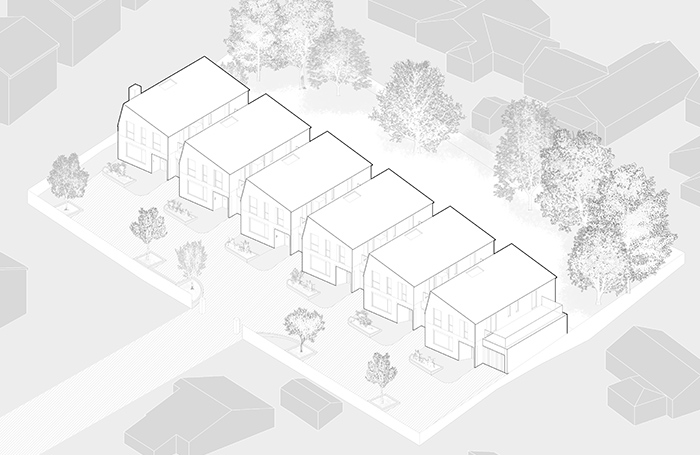Facture Architects was initially formed to work on a local community project while the two directors balanced their time in practice and lecturing at universities.
Although the idea was to use it as a vehicle to get involved with things they cared about locally, it didn’t take long for them to secure a range of projects in multiple sectors and grow the business in 2020. They continue to champion working locally alongside a growing portfolio of projects outside of London, from as far as Devon and the south coast, to the east coast where they regularly travel to maintain lecturing positions with the University of Kent.
This month, RIBA asked them a few questions about working locally, making new friends and what Facture is all about.
What inspired you to work locally initially?
Based in the borough of Greenwich there is plenty happening on our doorstep – from the Design District to Woolwich’s Crossrail station to the Plumstead Centre which is just around the corner. Taking an interest in the areas around where we live led naturally to connections with potential projects.
The first project was with a social enterprise charity – Stir Café – we worked with them to create a dynamic space that could function both as a support centre during the day and a more formal supper club in the evening. The budget was tight but we managed to achieve a lot with some OSB and reconfigurable seating modules. Since then, we have worked on all sorts of local designs including a cask wine bar concept, a beer shop and deli, and numerous residential projects, both private and developer-led.
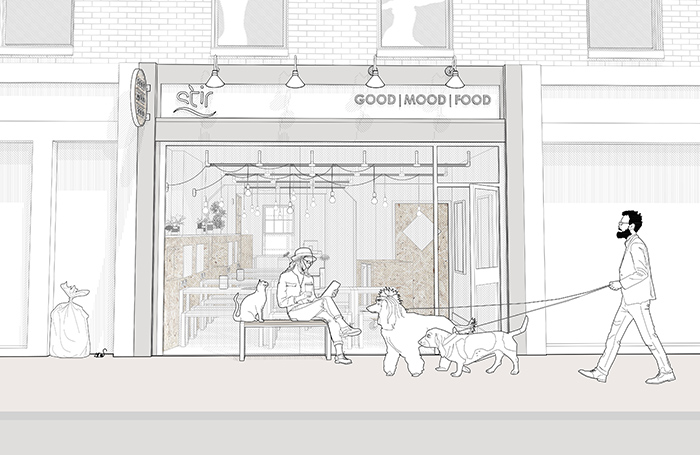
What’s your favourite thing about working on your doorstep?
We get a lot from the people that we work with and this became even more important during the pandemic – despite the challenges we faced in the spring of 2020 we found a natural fit with ‘working from home’. We are really interested in the positive effects of travelling a little less – building relationships with your neighbours, spending in the local economy and being an advocate for local services – this has to be central to any plan for a more sustainable future. We are really proud to have completed a successful project for a neighbour which drew in a contractor who lived on the next street and a joiner who moved into the house next door. It was a bonus to be able to be more involved than usual – working through the details of a bespoke dining table or getting hands on with some concrete finishing, approaching it in a similar way to making things in studio at university. It has never been a tougher time to undertake any building project so the fact that we all remain friends is an inspiration.
How does 'facture' come into your work?
The idea for ‘facture’ evolved from our studies which had a focus on how "the manner in which something is made, shows itself in the final piece". It was a concept that developed in the Bauhaus, but in simple terms, it makes reference to all those wonderful things about architecture communicating materiality, craft and integrity. It is an increasingly difficult aspect of contemporary architecture, complicated by competing needs for technical performance, compliance, and of course, value in construction. One of our first projects utilises traditional vertical slate tiling with the simple introduction of two angled cuts to create a playful hexagonal pattern. There is something about the workmanship and the handling of material that contributes to the architecture.
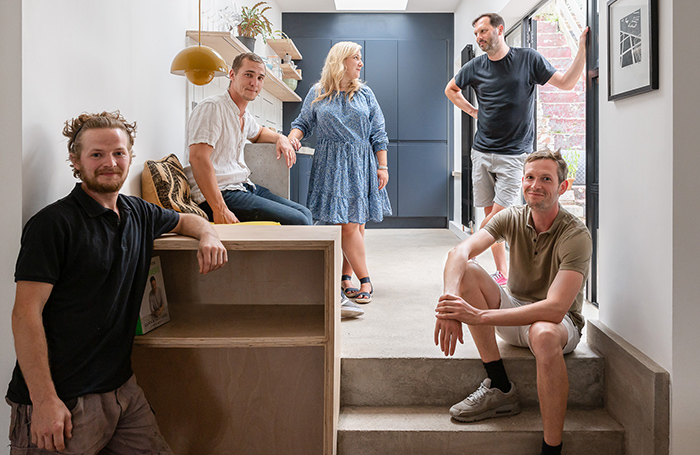
What’s the most exciting project you’ve got coming up and why?
In addition to our local adventures, we are involved in a wide range of projects, from extensions to a church in Hampshire which is currently in planning to a development of six houses in Dorset which is about to commence on site. These are a couple of the bigger projects which take longer to come to fruition – we cannot wait for more of the developer-led work to progress as you get an opportunity to consider housing more strategically which is one of our strengths. The houses in Dorset involve a beautiful site with the potential for views out to sea – designing within this context means that we are particularly excited to see this one taking shape.
We are also collaborating with a contemporary dance company to develop a structure that facilitates a performance about the experiences of being at home during lockdown (These 4 Walls) – this was a lot of fun and touches on issues that we care about. We feel fortunate to be working with a variety of clients at varying scales and enjoy the challenge of a small extension as much as unpicking the potential of much larger sites. We particularly like the sensitivity required to work within Conservation Areas and are very pleased with the outcome of a recent project in Maida Vale.
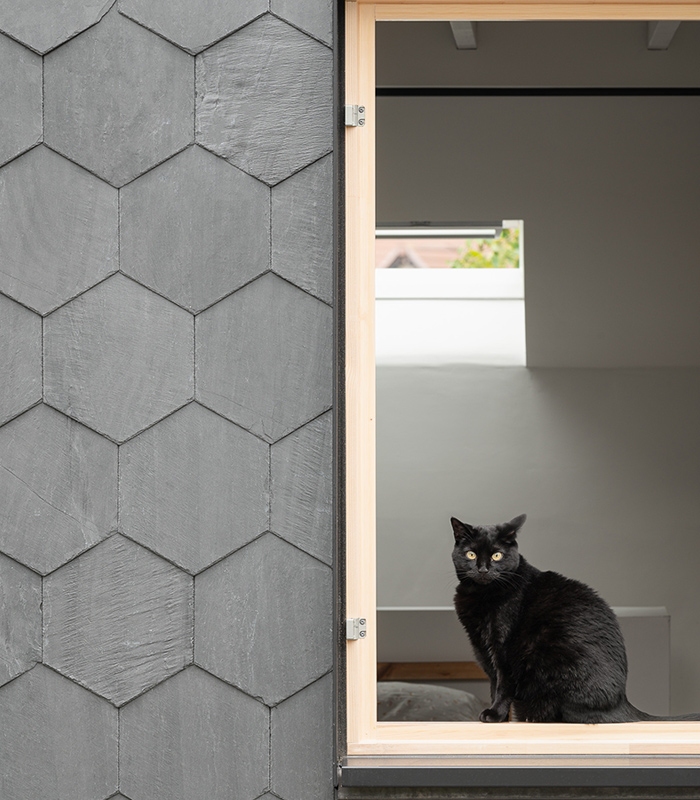
What do you think is the most important issue for architects to focus on right now, and what are you doing as a practice to tackle it?
The challenges we all face feel immense at this particular moment in time. We care about a positive future for all and feel that there are some immediate issues around housing, access to local provisions, and support for those who are in most need. While we are not at the helm of any specific projects tackling these issues at scale, we have previously completed feasibility studies pro bono to help secure funding for art, sports, and community projects and would encourage organisations to reach out to us. The very first project we looked at before even forming the company was for a canoe centre youth charity. Whilst that project has never progressed, assisting in the definition of it was an immense help to the charity. We cannot undertake all feasibility work for free, but we see this sort of approach as a mutually beneficial way to secure interesting work and give something back to the communities that we care about.
What do you think smaller architecture practices need the most support with?
Something that continues to come up with new clients relates to the service that we actually provide. Many talk in the language of just needing planning followed by building regs, while others expect to know how much the whole project will cost and what it will look like before even starting. We try to champion the RIBA Plan of Work (it was even featured in our ‘Co-working With Cats’ film) but each fee proposal is still a challenge to communicate. A diligent architect working through the stages builds in so much value while effectively managing risks but this is a tough service to sell – we are all so accustomed to buying products that it is difficult to comprehend the moving parts of a building project. We know RIBA covers this area but anything that distinguishes what the process adds by comparison to focussing on the core outputs would be a huge support.
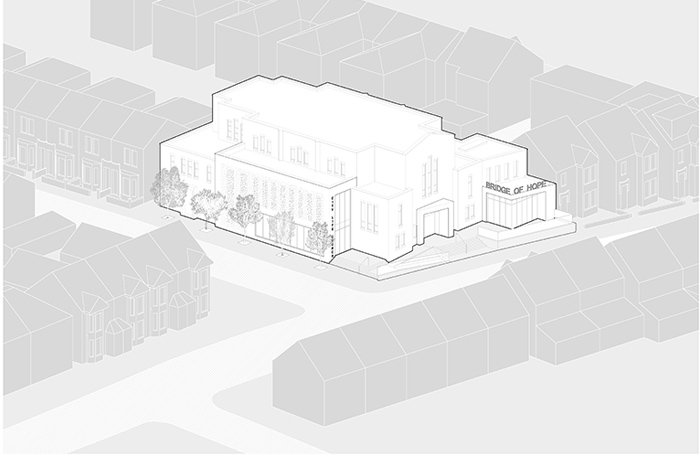
What is your advice for future generations of architects?
Be kind to yourself and others. We are having a sensible conversation about ‘toxic’ studio cultures at the moment and that is really important. We both came through challenging Part 2 environments and feel privileged to be where we are today – could it have been slightly less stressful? Definitely! Lead by example – share work, work together, ask questions, be nice. We are uniquely placed to be working with undergraduate students so we have an opportunity to be part of this conversation. The more pragmatic side of us would also recommend skilling up as quickly as possible – we are involved in the production of visual information so the more skills you have in graphical communication the better you will get on. That being said, we think that there is a complexity in the profession that requires all sorts of different skills – if you know you love architecture then do not be deterred – there will be a role out there for you and there is more value in the process of education than just becoming an architect.
To find out more about Facture Architects, visit the Facture Architects website or connect with them on Instagram, and Twitter.
